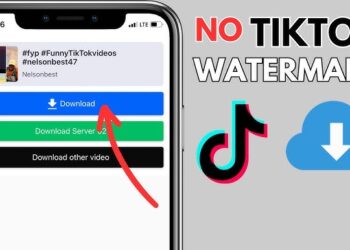In the last many years the world has seen a great growth in mobile and app-based cybercrime, with the ever-developing mobile threat landscape offering myriad of freely available tools for attackers to peg into their targets’ proprietary software and reverse-engineer apps so as to recognize weaknesses, secrets and even gather highly sensitive information.
Emerged from a desire to mitigate against such sorts of attacks at all costs, Android app obfuscation has become a standard methodology used by developers to avert the cybercriminals from decompiling as well as reverse-engineering source code, guarding apps against intellectual property theft.
The working of this concept
At its core, complication describes the act of obscuring or even making something harder to understand. Thus, code complication is a way of modifying an app’s code to make it challenging for attackers to read or even comprehend. While the functionality of the code stays the same, complication helps to conceal the logic and even purpose of the code of an application.
The procedure consists of some simple but dependable techniques and, once used together, can construct a strong layer of defence in order to protect an app’s source code against attackers. The classification of confusion techniques relies on the information they target. Some transformations target the verbal structure of the software, whereas others target the overall control flow.
A few of the examples are like renaming functions, overall methods, classes so as to use less descriptive names. Additional methods are like removing debug information, like parameter type, source file and even line number, and even removing java annotations.
Why Is Source Code So tough to Protect?
In a typical sense , you know valuable data and information gets protected by restricting access. For example, sensitive client files are always kept secure in password-protected, encrypted type of accounts that are tough or impossible for offenders to breach. However, it is also true that source code is visible to anybody who is using a program, so access aversion methods cannot be used to secure the code or any sort of information gathered within it.
Instead, programmers can simply disguise the code through obfuscation so that it appears nonsensical to humans but is still absolutely machine readable. This is something that will avert hackers from misusing the code while still permitting the program to run as specifically designed.
Complication software can easily get used to automatically apply different obfuscation methods to sections of code, or even programmers can select portions of data and even obscure them by hand.
Why you should obscure both native as well as non-native apps?
iOS
Objective-C as well as Swift are the commonest programming languages for iOS apps. Both are simply compiled to machine code that makes it more challenging to translate the code back to the original type of source code. This has formed up a misconception that iOS apps are tough to reverse engineer. However, the interest in analysing as well as understanding machine code is nothing new, and there is a mature type of technology in place for reverse engineering machine code, grounded on years of research and even expertise in the overall field.
Javascript
Developing a single type of hybrid app is efficient and perhaps be more cost-effective than developing native Android and even iOS individually. However, hybrid apps can be really more susceptible to attacks than apps written using native languages because javascript is convenient to reverse engineer as well as modify as it is not amassed into a more abstract representation in the published application.
Android
The Android operating system is massively popular, and developers are constantly constructing new apps designed to run on the system. In the general sense, all mobile code is prone to reverse engineering but you know code that is written in languages that permit dynamic introspection at runtime, like Java, are specifically at risk.
The ways to Obfuscate Source Code as well as Data
There are many different types of methods for obfuscating data. In order to strengthen overall code protections, programmers can simply mix and match diverse types of techniques across the code to make it even more challenging for hackers to read. Following you will get to walk through some of the commonest techniques for effectively obscuring data:
Alternate Code Forms
Translate short types of sections of the code into varied forms throughout the program to make deciphering it quite difficult without affecting run time. As an example, you can simply translate parts of your code to binary language, or even replace a function with a table search of all possible values that the function might generate.
Alter Up Data Storage Methods
Make your data more challenging to read by essentially hiding your data making use of different memory types and locations. Alternate between storing variables locally as well as globally to hide how the variables act and work together. You can even choose to randomize the addresses at which areas of code are located to form up an additional level of confusion and make the code a lot more challenging to read.
Randomize Aggregation Patterns
Another manner to confuse hackers or attackers is by packaging your data in random sort of sizes. For example, you could break arrays into an unnecessarily high number of sub-arrays to cloud any reverse engineering attempts.
Simply Encrypt the Strings
Though encryption is not really an effective method for protecting your entire source code, you can always make use of encryption as part of the complication process in the absence of even slowing the entire program. Pick the individual keys, code strings, and even other pieces of information to encrypt so as to create hacker blind spots in the code.
Interrupt the overall Code Flow
Then you can even add unnecessary statements or even dead code to your program to make it absolutely challenging to figure out what parts of the code include real data.
Conclusion
To sum up , there is much that you can do with the method of obfuscation for better protection of apps. This way you can add up a layer of security to your apps, programs and all.












Discussion about this post